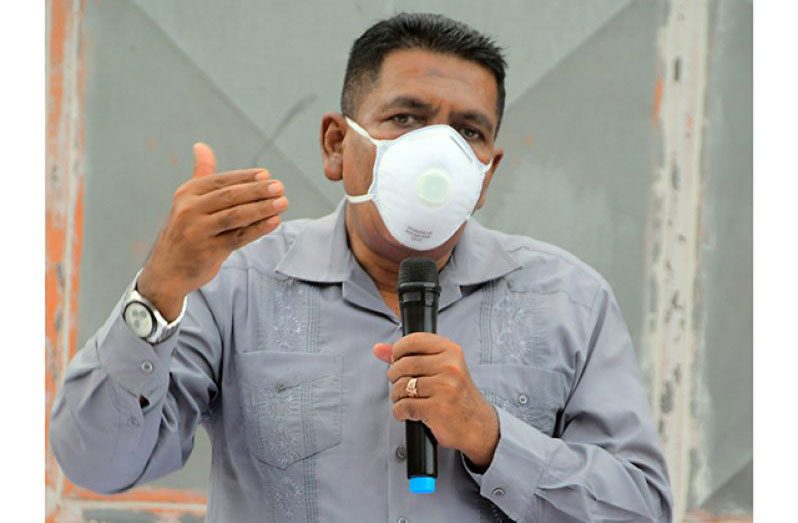ALTHOUGH Guyana in 2021 was faced with the most devastating floods in the country’s recent history, the agriculture industry showed incredible resilience, recording an increase in earnings from the exportation of several non-traditional commodities.
According to figures provided by the Ministry of Agriculture, Guyana, between the period January and November 2021, earned $2.6 billion from the exportation of non-traditional crops alone. This accounts for produce such as fruits, vegetables, seasonings, grain crops, oil seeds, root and tuber crops, among other things.
Even though thousands of acres of farmlands were devastated by the May/June 2021 floods, a swift $7.8 billion response from the government enabled scores of farmers to recuperate and return to the fields to restart production.
It would appear as though the government’s assistance was capitalised on quite fully, since earnings from the exportation of non-traditional crops grew significantly.
There was an increase of $100 million in revenue when compared to the same period in 2020. This accounts for at least 10,426 tonnes of the exported produce.
The increase in exports of agricultural commodities has been attributed to the implementation of a number of strategies by the People’s Progressive Party/Civic (PPP/C) government.
Last year’s earnings even outshone the ones recorded even before the coronavirus pandemic hit in March 2020.
It was previously reported that during 2019, only 9,121 tonnes of fresh fruits, vegetables and processed foods were exported from Guyana to the Caribbean region and other countries. The total export value of non-traditional agricultural commodities during 2019 was G$2.5 billion.

The significant increase in agricultural exports over the past months could be directly linked to the government’s calculated investments into the promotion of climate-resilient farming, using improved technologies and techniques.
With over 50 large-scale shade houses already set up countrywide, the Guyana Chronicle understands that an additional 100 facilities were added in 2021, largely owing to works executed by the National Agricultural Research and Extension Institute (NAREI), which has been engaging scores of local farmers on the benefits of shaded cultivation.
In addition, more and more farmers are also employing use of elevated plant beds, since these are seldom affected by floods, which have now become common, due to the effects of climate change.
Despite its long-term benefits, shade houses could be a little expensive to erect. To this end, the PPP/C, in its 2020 Emergency Budget had allocated $15.8 million for the purchase of shade house materials that can be sold to farmers at a minimal cost. The materials are being supplied to farmers as part of a “revolving fund,” which sees the government making no profits.
Over the past year, the use of shade houses and other climate-smart technologies have been gaining momentum as more and more farmers are beginning to recognise the effects of the harsh temperatures on various crops.
In a previous interview with this publication, Agriculture Minister, Zulfikar Mustapha, had said that the government remains cognisant of the impact that climate change has had on the agriculture industry, and has been working to minimise some of the foreseen challenges.
SAFEGUARDING FARMERS
Mustapha said that in addition to propagating climate-smart agriculture, the ministry is also preparing to safeguard farmers and their produce.
“For example, we are setting up more pumps because these natural gravity flows now are coming less and less, almost on a yearly basis, where siltation is taking over,” Mustapha noted.
He said that with the threat of the rising sea level, the government is taking a keen interest in ensuring the effectiveness of various conservancies across the country.
“…so we can store more water to irrigate rice fields and so,” Minister Mustapha had reasoned.
In addition to embarking on a massive project to strengthen the sea defences in critical areas across the country, the government is also pursuing the construction of three massive outfall channels which would be key to preventing floods that were as destructive as the ones experienced in 2005 and 2021.
Acknowledging the deficiencies that exist, President Dr. Irfaan Ali had pointed to the need for the government to replicate the $3.6 billion Northern Relief Channel, which was constructed at Hope/Dochfour, East Coast Demerara.
The massive eight-door Region Four (Demerara-Mahaica) drainage structure was conceptualised and constructed by a PPP/C government, prior to it demitting office in 2015.
Initially, when the project came on stream, it was heavily criticised by members of the then A Partnership for National Unity + Alliance For Change (APNU+AFC) opposition. However, fast forward more than a decade later, the Hope Canal is being hailed as the saviour of Region Four, as it protected the region from experiencing the brunt of the 2021 floods which devastated some 300 communities across the country. In some areas, water levels had even exceeded 16 feet, completely covering homes and vehicles, among other things.
It is expected that with increased investments in climate-resilient farming, better drainage and more value-added opportunities, Guyana’s earnings from agriculture would grow exponentially.




.png)









